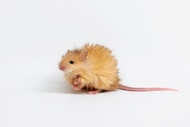This steampunk-looking robot could be NASA’s newest way to explore frozen alien moons

NASA’s newest spacecraft concept looks like it belongs in a steampunk convention more than a distant moon, but that’s exactly where it’s supposed to be headed.
Steam power sounds like a relic of the Victorian era only glamorized by steampunk culture, but NASA is developing SPARROW (Steam Propelled Autonomous Retrieval Robot for Ocean Worlds), a new steam-powered robot concept that could potentially unearth life on moons like Enceladus or Europa. Sure, our space agency might be known for the most cutting-edge technology, but even that could face potential disaster on frozen moons whose surfaces could be perilous. This relatively simple contraption is capable of doing things more complex robots can’t.
There is a reason that SPARROW was given Phase I funding through NASA’s NIAC (NASA Innovative Advanced Concepts) program.
"The terrain on Europa is likely highly complex," said Gareth Meirion-Griffith, JPL roboticist and the lead researcher of the concept. "that would stop most robots in their tracks. But SPARROW has total terrain agnosticism; it has complete freedom to travel across an otherwise inhospitable terrain."
What Meirion-Griffith means isn’t just some unevenness on the surface. Nobody really knows what a robot crawling on an alien moon might encounter. Penitentes, enormous spikes of ice that also occur on Earth, could stake other robots like vampires. These structures can be as tall as 15 feet and form when snow sublimates (turns directly into water vapor) in the sunlight.
There could be deep cracks in the ice. Europa’s crust is 10 to 15 miles thick, so a large enough crack could mean doom for most robots. Enceladus has monster craters up to 22 miles in diameter. However, SPARROW has an ingenious way to bypass these dangers.
SPARROW is about the size of a soccer ball and runs on thrusters, avionics and other instruments all powered by steam. The advantage this already offers is that it won’t pollute extraterrestrial ice with rocket fuel. It would depend on a lander as a home base that would melt down ice into water to fill up the bot’s tank, which would heat that water into steam that would give it a boost into the air. There is almost nothing that could hold this deceptively old-fashioned machine back. Enceladus and Europa’s low-gravity environments are free of atmospheric drag that would hold it back on Earth. This means it will be able to not just hop, but leap for miles.
“The employment of a multi-hop architecture allows for the rapid traverse of great distances, enabling a single mission to reach multiple geologic units within a timespan conducive to system survival in a harsh radiation environment,” Meirion-Griffith said on the SPARROW project page.
Fuel running out? No problem. So long as there is ice, there will be fuel. Almost limitless resources in that area means that multiple SPARROWS could potentially land on one of our solar system’s icy moons and explore as much of the surface as possible. Refueling would also give them a chance to deposit any scientific finds with the lander as they get a refill. Scientists working on the SPARROW project have tested out different water-based propellant systems and run computer simulations to figure out the best angle and speed at which SPARROW should leap. They realized it should go big or go back to Earth—literal huge leaps would be the most efficient way for it to explore glacial terrain.
Maybe NASA should start checking out steampunk conventions for their next genius idea.




























